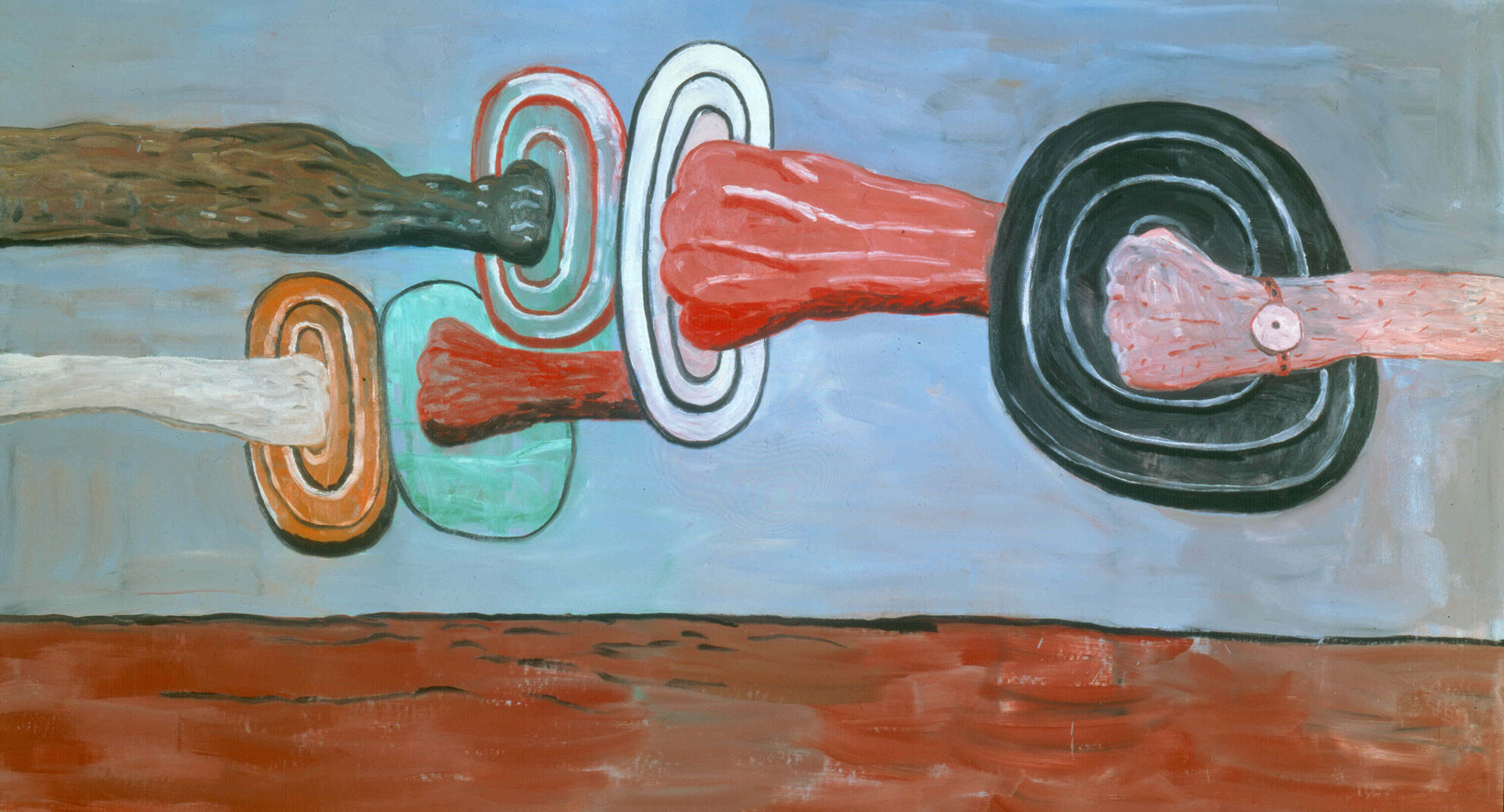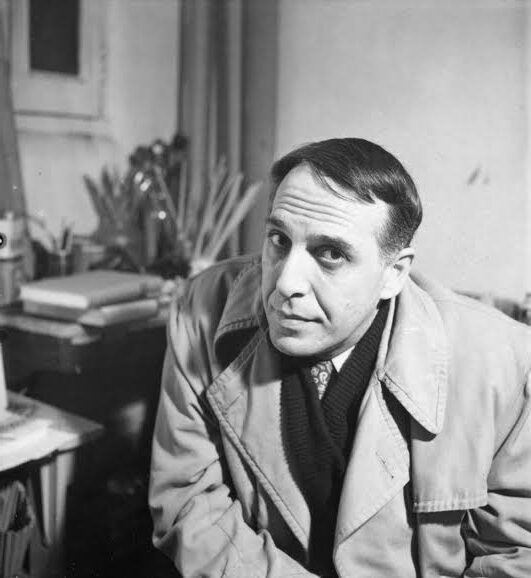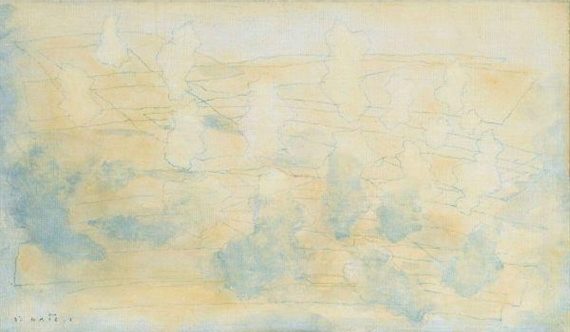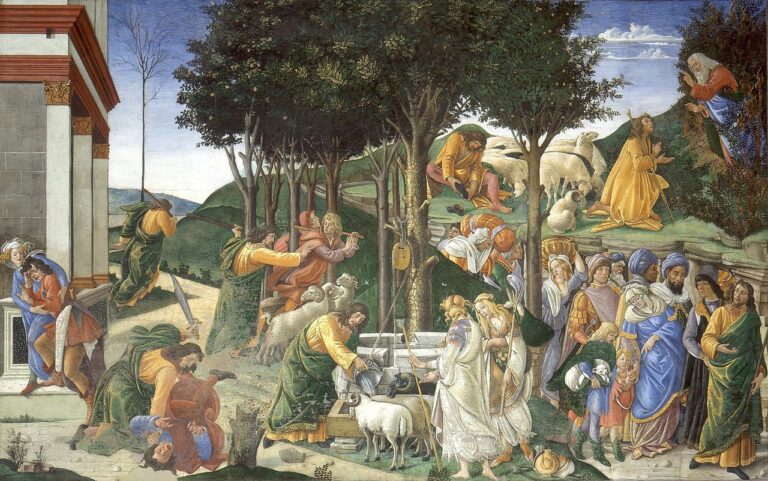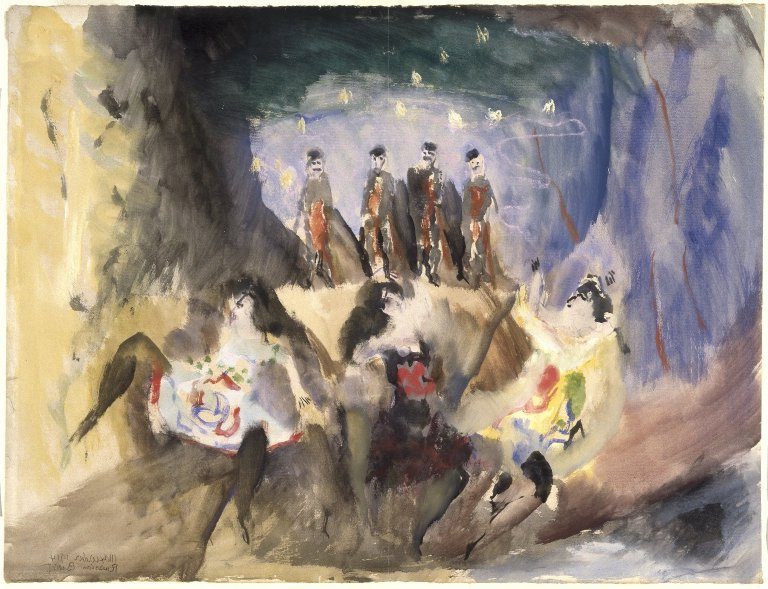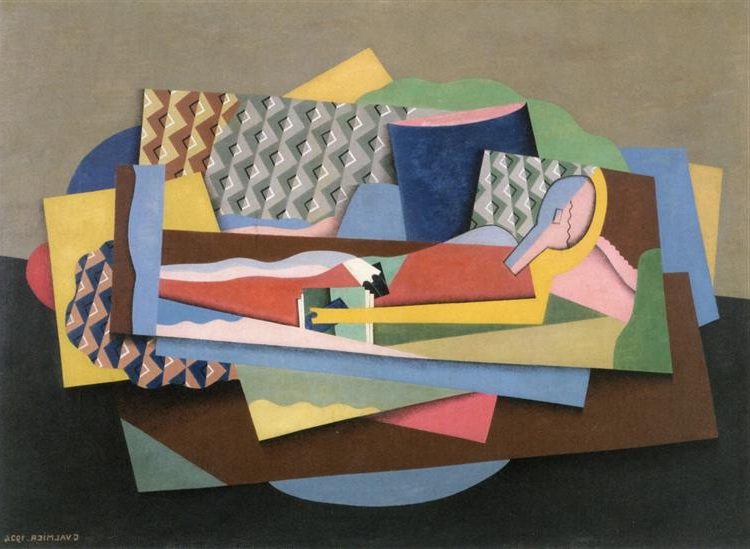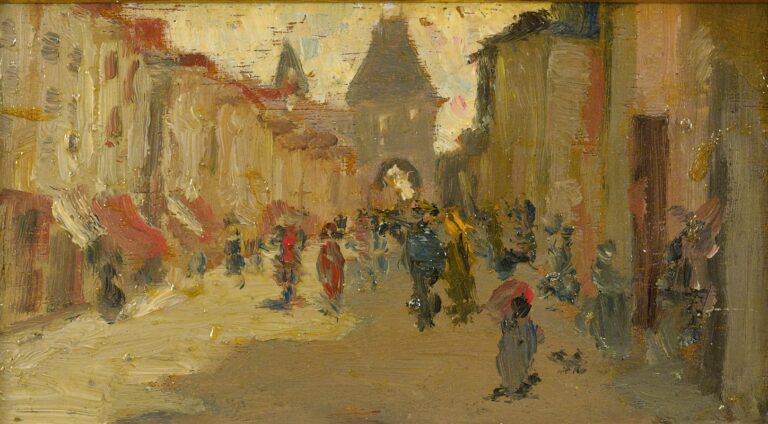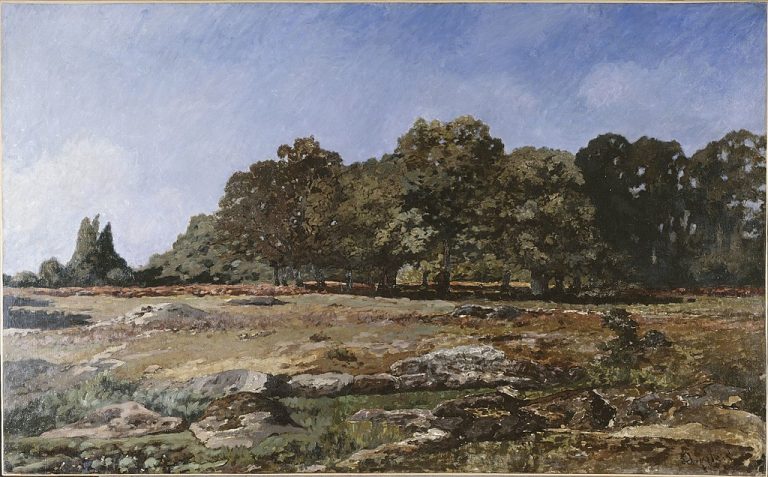Philip Guston: Painter Who Transformed Abstract Expressionism
Born: June 27, 1913, Montreal, Quebec, Canada
Death: June 7, 1980, Woodstock, New York, US
Art Movement: Abstract Expressionism, Neo-Expressionism
Nationalité : Américain
Teacher: Frederick John de St. Vrain Schwankovsky
Institution: Los Angeles Manual Arts High School, Otis Art Institute
Philip Guston: Painter Who Transformed Abstract Expressionism
Philip Guston’s Early Career and Artistic Evolution
Philip Guston’s artistic journey was marked by dramatic shifts and reinventions. He moved from social realism to abstract expressionism and finally to a unique figurative style that would define his legacy.
Initial Years and 1935 Breakthrough
Philip Goldstein, later known as Philip Guston, was born in 1913. Guston showed artistic talent from an early age. By the 1930s, he had established himself as a promising young painter with a strong social consciousness.
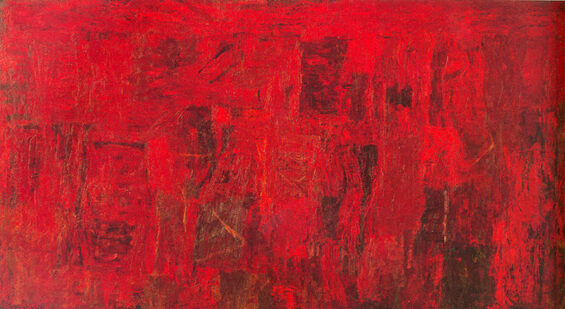
Red Painting, 1950, by Philip Guston
In 1935, Guston achieved his first major breakthrough when he began working on large-scale murals. These projects were influenced by Mexican muralists like David Alfaro Siqueros. They demonstrated his commitment to socially relevant art that addressed the struggles of ordinary people.
His early murals combined elements of Renaissance painting with modern social themes. This period established Guston as part of the social realist movement, with works that were technically accomplished and politically engaged.
Transition Towards Abstraction in 1944
Around 1944, Guston’s work began to shift dramatically. Troubled by World War II and questioning the ability of realistic art to address the horrors of the time, he moved away from his earlier figurative style.
This transitional period saw Guston experimenting with more symbolic and abstract forms. His paintings became less literal and more suggestive, using fragmented shapes and mysterious spaces.
The year 1944 marked a crucial turning point as Guston started to dismantle his previous approach. His colors became more muted, his compositions more abstract, and his subject matter more introspective.
Emergence of Abstract Expressionism in 1950s New York
By the early 1950s, Guston had fully embraced Abstract Expressionism and became an important figure in the New York art scene. His paintings from this period feature delicate, shimmering fields of color and light.

The Pit, 1976, by Philip Guston
Unlike the bold gestures of peers like Jackson Pollock, Guston developed a more sensitive, almost tremulous brushwork. His abstract works created atmospheric spaces that seemed to vibrate with emotional intensity.
Guston’s abstract paintings were highly regarded by critics and collectors. Works from this period show a masterful handling of paint and demonstrate his ability to create powerful emotional effects through non-representational means.
His technique involved building up layers of small brushstrokes that created a distinctive flickering quality. This approach earned him the respect of fellow artists and established his reputation as one of Abstract Expressionism’s most thoughtful practitioners.
Figuration Return in the Late 1960s
In perhaps his most controversial move, Guston shocked the art world in 1968-1970 by returning to figuration. After decades as a respected abstract painter, he unveiled cartoonish, deliberately crude figurative works.
These new paintings featured hooded figures (reminiscent of Ku Klux Klan members), disembodied body parts, and everyday objects rendered in a raw, primitive style with a limited palette of pinks, reds, and blacks.
The art establishment initially rejected this dramatic shift. Critics were hostile, friends were bewildered, but Guston remained committed to his new direction, saying he was tired of “purity” and abstraction.
This late figurative work eventually came to be seen as his most original contribution to modern art. His brave return to representation paved the way for later generations of painters and demonstrated his lifelong commitment to artistic honesty over stylistic consistency.
The Controversial and Political Aspects of Guston’s Work
Philip Guston’s art often sparked intense debate due to his unflinching portrayal of social issues and his dramatic stylistic shifts. His most contentious works emerged during his return to figurative painting after years as an abstract expressionist.
Depictions of Ku Klux Klan from 1968 to 1970s
In 1968, Guston shocked the art world by abandoning abstraction and introducing cartoonish Klan figures in his paintings. These hooded characters appeared in works like “The Studio” (1969), where a Klan-hooded figure is shown painting a self-portrait.
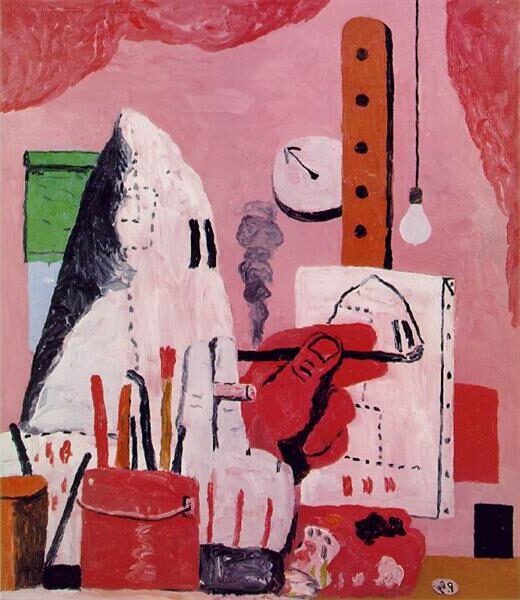
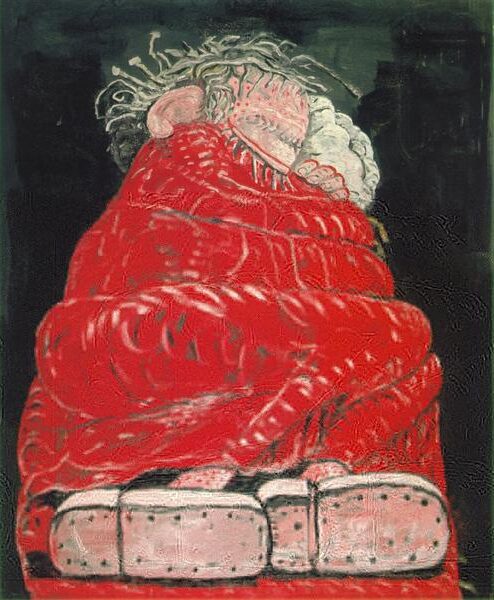
These images weren’t meant to glorify the KKK but rather to confront America’s racist history. Guston, born to Jewish parents who fled persecution in Ukraine, used these symbols to explore hatred and bigotry.
The controversy around these paintings resurfaced in 2020 when several museums postponed a major Guston retrospective. They cited concerns about presenting the Klan imagery without proper context during a period of heightened racial tension in America.
Artistic Responses to Social Issues and Vietnam War
By 1970-71, Guston’s work evolved to address broader political concerns, particularly the Vietnam War. He created paintings that critiqued political leadership and military actions through his distinct visual vocabulary.
His crude, fleshy figures and everyday objects took on new meaning as symbols of corruption, violence, and moral failure. Works from this period feature motifs like shoes, clocks, and light bulbs alongside disturbing imagery that reflected his dismay with American politics.
Guston felt artists had a responsibility to respond to social crises. He once stated: “What kind of man am I, sitting at home, reading magazines, going into a frustrated fury about everything—and then going into my studio to adjust a red to a blue?”
Late Period: Satire and Social Commentary
In his final decade, Guston refined his figurative style into powerful satirical commentary. His late paintings combined dark humor with sophisticated visual metaphors to address persistent social problems.
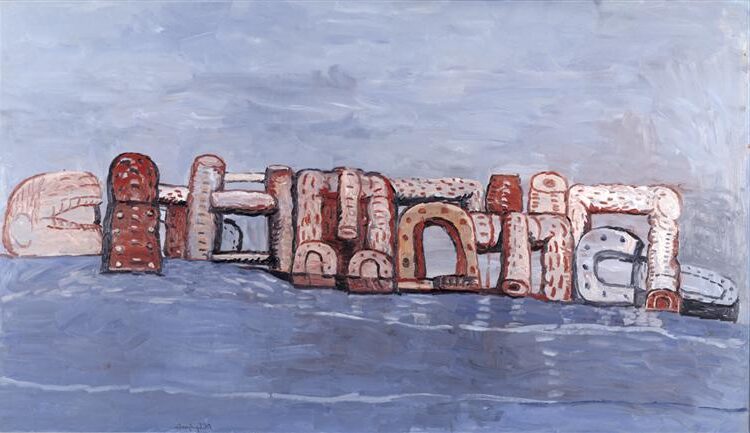
Blue Water, 1976, by Philip Guston
These works featured recurring symbols—disembodied heads, cigarettes, and piles of shoes—that conveyed existential anxiety while critiquing American society. The deliberately awkward style of these paintings added to their unsettling impact.
Critics initially rejected this late work as too crude or simplistic. However, these paintings are now considered among his most influential, inspiring generations of artists to engage with political content.
Guston’s willingness to risk his reputation by abandoning a successful abstract style in favor of controversial figurative work established him as an artist who prioritized moral urgency over aesthetic fashion or market demands.
Philip Guston’s Legacy and Influence on Modern Art
Philip Guston’s work continues to resonate throughout the art world decades after his death in 1980. His unique artistic journey from social realism to abstract expressionism and finally to his controversial late figurative style has cemented his place as one of America’s most influential modern painters.
Exhibitions at Prominent Institutions
The exhibition “Philip Guston Now,” the first major retrospective of the artist’s work in nearly two decades, showcases 73 paintings and 27 drawings from public and private collections. This traveling exhibition has been hosted by major museums including the Museum of Fine Arts in Boston, the National Gallery of Art in Washington, and Tate Modern in London.
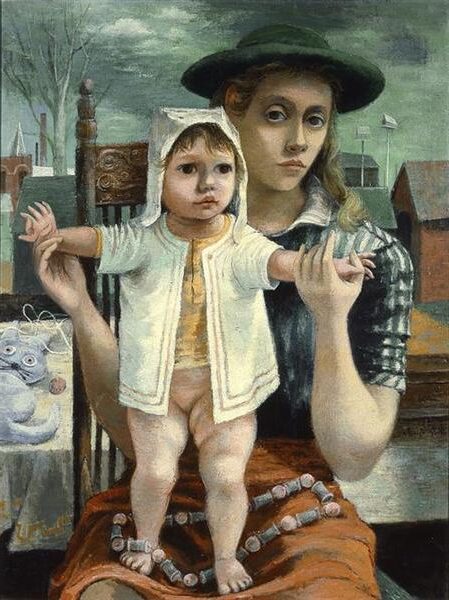
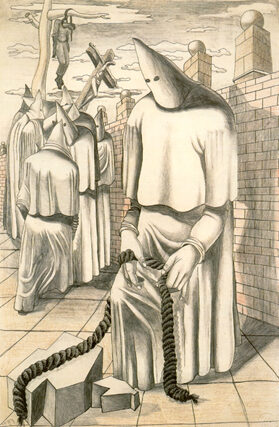
Prior to this, Guston’s work has been featured at the San Francisco Museum of Modern Art, the Philadelphia Museum of Art, and numerous other prestigious institutions worldwide. The 2003-2004 retrospective that traveled from the Modern Art Museum of Fort Worth to the San Francisco Museum of Modern Art, the Metropolitan Museum of Art, and the Royal Academy of Arts in London significantly boosted Guston’s critical reputation.
The Philip Guston Foundation and Estate
In 2012, Musa Mayer, Guston’s daughter, established the Guston Foundation to preserve and promote her father’s artistic legacy. The foundation maintains a comprehensive archive of the artist’s work and life.
It provides scholars, curators, and the public with access to research materials and documentation of Guston’s extensive body of work. The foundation also authenticates works and supports exhibitions and publications that further understanding of Guston’s contributions to art history.
Through careful management of his estate, the foundation ensures that Guston’s paintings continue to reach new audiences. They also work to contextualize his more controversial late works that initially shocked the art world but are now considered groundbreaking.
Impact on Contemporary Art and Future Generations
Guston’s late figurative paintings, with their cartoonish style and bold social commentary, have proved especially influential on younger generations of artists. The exhibition “A Thing for the Mind” specifically examined how Guston’s 1978 painting “Story” has filtered into the work of contemporary artists.
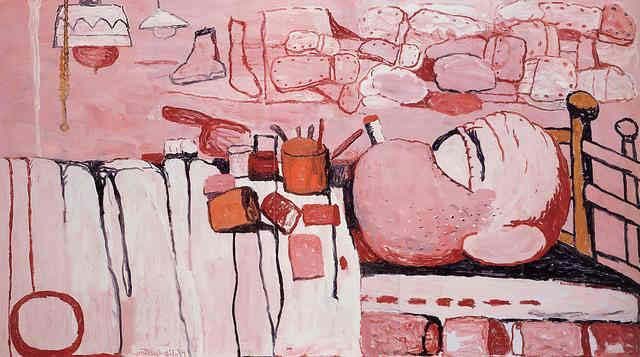
Painter in Bed, 1973, by Philip Guston
His willingness to abandon abstract expressionism at the height of its popularity to return to figurative work showed remarkable artistic courage. This move has inspired countless artists to follow their own vision regardless of current trends or critical reception.
Guston’s distinctive visual vocabulary—hooded figures, clocks, shoes, and cigarettes—continues to echo in contemporary painting. His exploration of political themes, personal anxiety, and moral questioning remains relevant to artists working today. His ability to blend high art traditions with comic-inspired imagery helped pave the way for later movements in contemporary art.
Questions fréquemment posées
Philip Guston’s artwork sparks curiosity about his techniques, themes, and artistic journey. His distinctive style and influential contributions to modern art continue to fascinate art enthusiasts worldwide.
What themes are prevalent in Philip Guston’s work?
Philip Guston explored social and political issues throughout his career. His early murals addressed poverty and fascism during the Great Depression.
Later works featured symbolic imagery like hooded figures that referenced the Ku Klux Klan and American racism. These provocative elements reflected his concern with moral questions and social justice.
Personal anxieties and introspection also featured prominently in his paintings. Everyday objects like shoes, clocks, and lightbulbs became powerful symbols in his work.
How did Philip Guston’s style evolve over his career?
Guston began as a muralist influenced by social realism in the 1930s. He then shifted to abstract expressionism in the 1950s, creating delicate, atmospheric paintings with subtle colors.
His most dramatic transformation came in the late 1960s when he returned to figurative painting. This controversial move shocked the art world as he developed a cartoonish, almost crude style with bold outlines and simple forms.
This late style featured thick, expressive brushstrokes and a limited palette dominated by pinks, reds, and blacks. His raw, direct approach influenced generations of painters who followed.
What impact did Philip Guston have on the art movement of his time?
Guston challenged artistic conventions by abandoning abstract expressionism when it was at its height. His return to figuration in the late 1960s was considered radical and even betrayal by some critics.
His willingness to address political and social issues through art inspired later generations. Many contemporary artists cite Guston as a major influence for his courage to follow his artistic instincts rather than trends.
His late work bridged high art with comic-like imagery, helping pave the way for pop art and neo-expressionism. His influence extends to artists working today in painting, illustration, and even street art.
What are the most notable exhibitions of Philip Guston’s art?
“Philip Guston Now,” a major retrospective at the National Gallery of Art, ran from March to August 2023. This exhibition sparked discussions about how to present challenging artwork in contemporary contexts.
The Tate Modern in London has featured his work in significant exhibitions exploring his artistic evolution. These shows have helped introduce new generations to Guston’s impactful art.
The Museum of Modern Art and the Guggenheim have included Guston in important surveys of American painting. His inclusion in these prestigious institutions confirms his place in the canon of modern art.
Can you describe the significance of pink in Guston’s paintings?
Pink became Guston’s signature color in his late-period figurative work. He used it for flesh tones, backgrounds, and many objects, creating a distinctive and immediately recognizable palette.
The color creates an unsettling contrast when paired with his often dark subject matter. This tension between the cheerful color and serious themes adds emotional complexity to his paintings.
Art historians note that the specific shade of pink Guston used—sometimes described as fleshy or visceral—contributes to the raw, exposed feeling of his work. It suggests vulnerability beneath the surface of everyday objects and scenes.
What materials and techniques did Guston commonly employ in his creations?
Guston primarily worked with oil paint on canvas throughout his career. In his later period, he applied paint thickly with visible brushstrokes, creating textured surfaces.
He developed a direct, almost crude technique that emphasized the physical act of painting. This approach reflected his belief that art should be immediate and honest rather than refined.
His drawing practice was equally important to his process. Guston often made charcoal sketches to work through ideas before translating them to paint. This allowed him to maintain the spontaneous quality of his initial marks in the final works.

